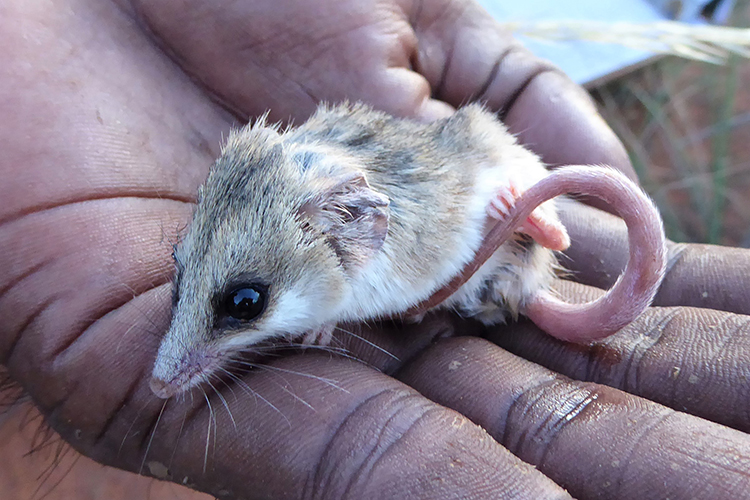
Indigenous action vital for Australia’s threatened species
Wednesday, 04 September 2019If you are a threatened species in Australia, chances are you occur on Indigenous-managed land, as it is the last stronghold for many species which have been lost from the wider landscape.
Indigenous communities play a critical role in protecting threatened species from extinction on their traditional country. Three-quarters of Australia’s
threatened species have all or part of their current distribution on Indigenous-managed land, according to research by the Threatened Species Recovery
Hub.
Cissy-Gore Birch, a Jaru/Kija woman from the east Kimberley, provides advice to the Threatened Species Recovery Hub’s six-year $60 million research initiative.
“I believe we all have a role in managing Country and taking care of the environment,” said Ms Gore-Birch.

Karajarri Ranger Beno with a skink caught during fauna surveys in the Edgars Rangers, Western Australia. Photo: Karajarri IPA

Karajarri Ranger Beno with a skink caught during fauna surveys in the Edgars Rangers, Western Australia. Photo: Karajarri IPA
“It is vital for threatened species programs to work with Indigenous people and for everyone to work in collaboration.
“Almost half of Australia’s land area is managed by Indigenous people.
“There are many species, like the Greater Bilby, that were once widespread, but have been lost from large parts of their original range, and are now mainly
found on Indigenous managed land.
The Australian Government’s Threatened Species Commissioner, Dr Sally Box, acknowledges that Indigenous Rangers and Traditional Owners maintain strong
connections to their land and their ongoing participation in threatened species recovery is essential.
“Aboriginal and Torres Strait Islander people have a unique understanding of the landscape and species on their country,” said Dr Box.
“This understanding and the application of traditional management practices benefit the recovery of many species that have their strongholds on these lands.”

Kinyirnpa Jukurrpa’s Jigalong Rangers point out a bilby burrow on their country. Photo: Anja Skroblin
Bradley Moggridge, a proud Murri from the Kamilaroi Nation who now lives on Ngunnawal land in Canberra, is the Threatened Species Recovery Hub’s Indigenous Liaison Officer.
“Co-design and co-delivery of threatened species research and on-ground management is essential to successful threatened species management in Australia
and to supporting the values and needs of Indigenous communities Caring for Country.
“Australia cannot conserve threatened species without the active participation of Indigenous people,” said Mr Moggridge.
Ms Gore-Birch also thinks that we need to think more broadly than just threatened species across Australia.
“People are concerned about biodiversity loss in Australia, but threatened species are not the only things that are important to people, there are also
species that are culturally important to Aboriginal people that could be declining on their traditional country,” Ms Gore-Birch said.
“We also need to care for these species that are important to Indigenous people and the broader community.”
Culturally significant species have stories connected to people, kinship, totems or cultural and customary resource use and many are now extinct or threatened
locally. The stories and cultural practices that connect Indigenous people with these species are at risks of becoming extinct along with the plants
and animals themselves, if we don’t look after them better.
The Threatened Species Recovery Hub is a collaboration of leading Australian research institutions to undertake science to support the recovery of Australia’s threatened species. It receives
funding from the Australian Government’s National Environmental Science Program.
For further information contact Jaana Dielenberg - j.dielenberg@uq.edu.au
Top image: A lesser hairy-footed dunnart found during fauna surveys by the Karajarri Rangers in the Kimberly, WA. The dunart is a small carnivorous Australian marsupial. Photo: Sarah Legge